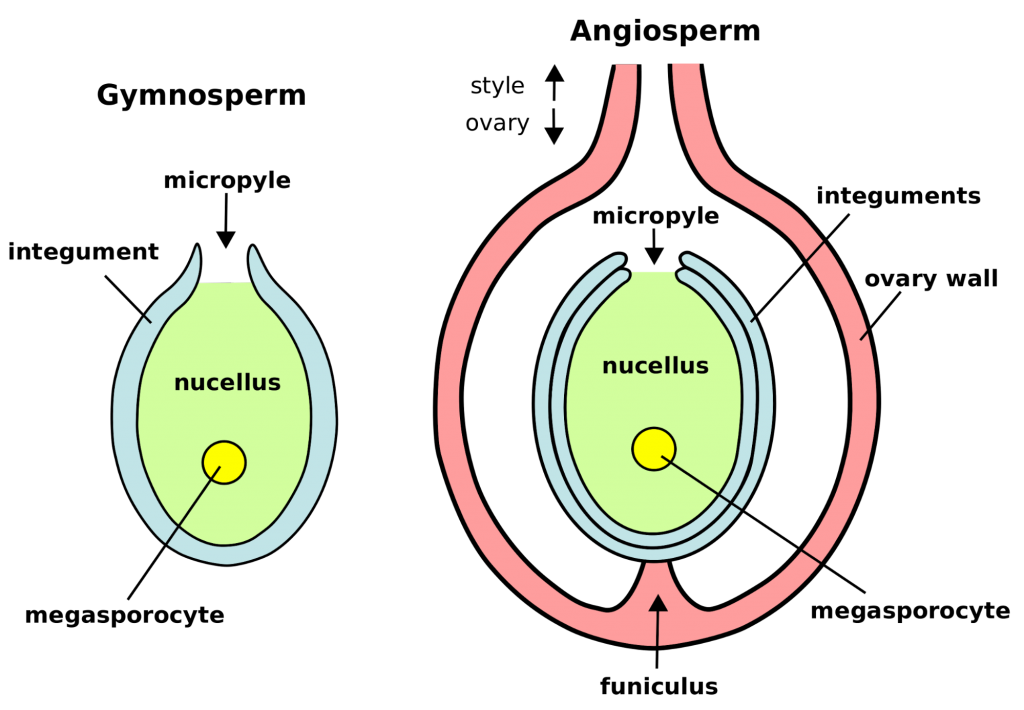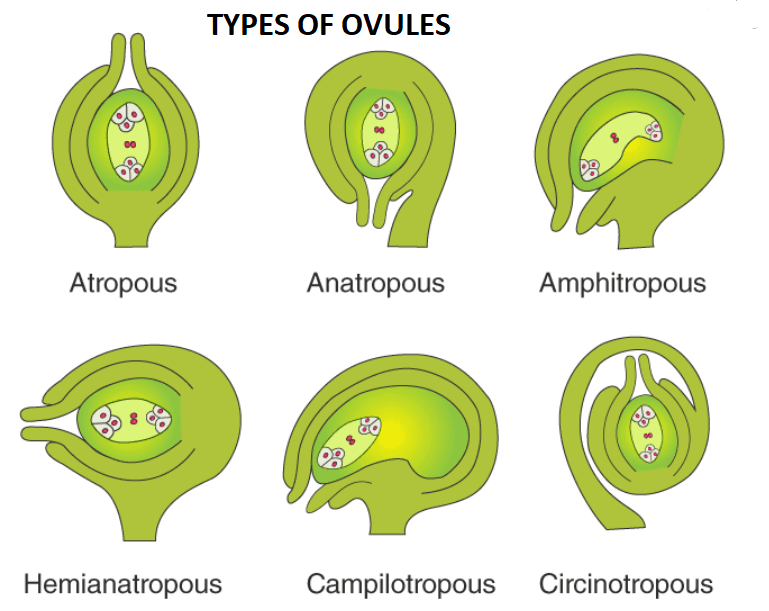An Ovule is a part of the female reproductive system in plants. It is the part where female reproductive cells are made and kept, which, after fertilization, turn into seeds. In this article, we are going to look at the components and types of the ovule in detail.
Index
What is Ovule
The Ovule plays an essential role in plant reproduction. After fertilization, the Ovule swells & then hardens, turns into a seed. Ovary around it grows and turns into fruit.
There are some exceptional cases where the Ovule turns into a fruit. Example: Avocado & Kiwi.
Components of an Ovule
The plants’ Ovule is made up of female gametophytes;
- Nucellus
- Integuments
Nucellus
The nucellus is the most significant part of the Ovule. It contains the embryo sac and nutritive tissue.
The nutritive tissue remains even after fertilization providing nutrients to the embryo.
Integuments
Integuments are a protective tough layer inside the Ovule. This encloses the nucellus but leaves a small gap known as micropyle.
In gymnosperms, there is only one integument, while the angiosperms have two integuments.

Types of plants Ovule
Types of Ovule
There are six types of Ovules; these differ based on their shape.

Orthotropous or Atropous
In Orthotropous, the plant Ovule is aligned straight such that the Chalaza, the Funicle & the micropyle align.
Example: Polygonum
Anatropous
In Anatropous, the Ovule gets completely inverted during the development period such that the micropyle lies near the hilum.
Example: Pisum
Hemi-Anatropous
In Hemi-Anatropous, the Ovule takes a right angle shape with respect to the Funicle.
Example: Ranunculus
Campylotropous
Campylotropous is a bent shape Ovule, and the alignment between Chalaza and micropyle ceases to exist, making the embryo sack slightly curved.
Example: Brassica
Amphitropous
In Amphitropous, the Ovule is completely curved and forms a shape like a horseshoe.
Example: Poppy
Circinotropous
In Circinotropous, the Funicle wraps around the Ovule in a circle, and the micropyle ultimately points upwards.
Example: Opuntia
FAQs
An Ovule is a part of the female reproductive system in plants. It is the part where female reproductive cells are made and kept, which, after fertilization, turn into seeds.
In flowering plants, the Ovule is located inside the gynoecium. The ovary of the gynoecium produces one or more Ovules.
There are six types of Ovule: Orthotropous, Anatropous, Hemi-Anatropous, Campylotropous, Amphitropous and Circinotropous.
The plant’s Ovule is made up of female gametophytes; those are Nucellus and Integuments.
